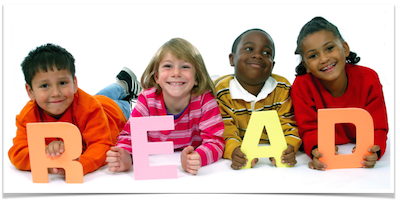Fundamentals of Learning to Read with Poetry
Posted on 3/5/2017

As we grow our fundamentals of reading and literacy, we gain confidence as lifelong learners. When we do this in engaging, fun, and entertaining ways, we grow our passion for reading and lifelong learning.
Essentail Questions
How do we make learning to read fun and entertaining?
How do we use poetry to grow our fundamentals of literacy?
Phonics Things and Poetry
When I wrote Phonics Things, I wanted to produce a reading and literacy tool that was first and foremost engaging, fun, and entertaining. But, I also wanted to create a reading and literacy tool that would grow the fundamentals of reading in multiple ways - phonological/phonemic awareness, phonics, reading fluency, reading comprehension, and vocabulary.
The more my research and work evolved, it became clear that poetry was an effective vehicle to accomplish what I set out to achieve.
Phonics Things is framed around 80 Illustrations, 80 poems, and 80 word lists featuring letter and letter combination sounds of the English language – “Phonics 101.”
However, as you read Phonics Things, it becomes evident how each illustration, poem, and word list grows all the fundamentals of reading. How does Phonics Things work?
Phonological and Phonemic Awareness
When it comes to phonological and phonemic awareness, the emphasis is on growing the learner's exposure to the sounds of the English language.
Each Phonics Things poem is intentionally peppered with Tier One (basic sight words), Tier Two (advanced nouns, verbs, adjectives, and adverbs), and Tier Three (academic) vocabulary to grow phonological and phonemic awareness. The poems' second and fourth lines of each stanza rhyme.
The vocabulary word lists present featured phonics sound/letter(s) in the beginning, middle, and end of the word. More often than not, the "word list" words are Tier Three vocabulary (language arts, math, science, and social studies).
Phonics Things intentionally grows phonological and phonemic awareness in fun, engaging, and impactful ways.
Phonics
The featured words illustrated, the words within the poems, and the vocabulary presented in the word lists provide the opportunity to sound out words using strategies such as blending, segmenting, and syllabication.
Reading Fluency
Reading the poem multiple times with expression and pace grows reading fluency. We can practice reading the poem with different tones of emotion. For example, read the Magnifying Glass poem (below) with ‘wonder’ one time, then with ‘excitement’ the next.
Reading Comprehension
Each and every Phonics Things poem tells a story. Reading the poem, the reader can exercise making meaning and comprehension in two ways:
1) Literal – Summarize in your own words, what happened. Be explicit.
2) Inferential – Make meaning through connections and inferences as to what might be true. Ask, ‘What do you think?’ Interpret what is implied.
Vocabulary
Again, the Phonics Things poems and words lists are intentionally peppered with Tier One (basic sight words), Tier Two (advanced nouns, verbs, adjectives, and adverbs), and Tier Three (academic) vocabulary to not only grow phonological awareness, but also to grow vocabulary.
When we grow our ability to use a broad selection of vocabulary to express precisely what it is we aim to communicate, we grow our ‘oral language capacity.’
Presentation
Performing the poem, in addition to growing the fundamentals of literacy mentioned above, we develop the Traits of Presentation:
- Volume and Clarity
- Fluency, Expression, and Pace
- Body Language and Eye Contact
- Preparation and Rehearsal
In doing so, we grow our sense of confidence in make a presentation.
Whether with Phonics Things or other books of poetry, have fun with poems to grow your reading intelligence.
Magnifying Glass
A magnificent glass magnifier
helps us examine and analyze.
We can observe many insects and plants
enlarged for our science-keen eyes.
Our ladybug buddies make very good studies,
contrasting color and more.
Check out their little round bodies.
See details you’ve not seen before!
So explore this vast world of ours,
unearth and delight in the new,
prepare for the unexpected,
with a unique and wonderful view.
And never underestimate the ability of child to decipher the English alphabet on their own. The following work list for 'gl,' which is presented alongside the poem Magnifying Glass in Phonics Things, gives the student the opportunity to compare and contrast vocabulary with common spelling patterns. Students grow vocabulary as they blend, segment, syllabicate, and write these words in sentences:
Word List
- globe
- global
- glossary
- wiggling
- hourglass
- eyeglasses
- angle
- single
- bugle